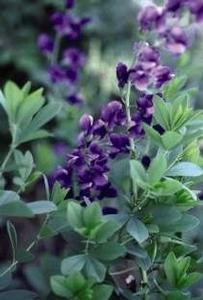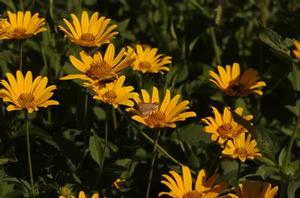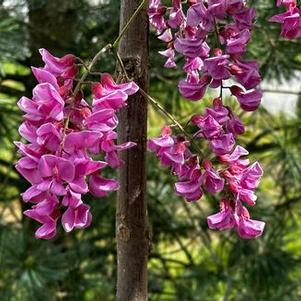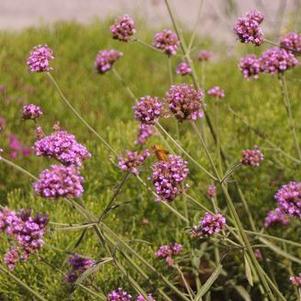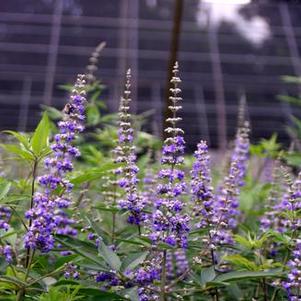Send in the Skippers
Right on the back of butterfly week, we want to pay homage to some of the quickest workers of Pleasant Run Nursery – the skippers. True to their name, these flighty little creatures have been keeping the nursery alive with movement as they skip from flower to flower, hungrily snatching up nectar from a variety of plant material. One thing’s for sure: the skippers seem to have some favorite nectar plants, based on the abundant populations that can be observed watching certain crops for only a few moments. While the list could probably go on, this week we’re going to highlight only a handful of flowering showstoppers that the skippers can’t seem to stay away from, starting with Heliopsis helianthoides.
Known commonly as false sunflower and smooth oxeye, Heliopsis helianthoides is a lovely North American native perennial known for brightening up the summer landscape with its golden yellow daisy-like blooms. Beginning in June and persisting into September, the cheery flowers attract a number of bees, butterflies, hoverflies, and other pollinators, while the eventual seedheads provide food for hungry songbirds from fall and into winter. Adaptable and hardy to many different soil conditions, Heliopsis helianthoides is perfect for reclaiming fields, prairies, woodland edges and disturbed sites, as well as for use in the full sun naturalized garden where self-seeding is desired.
Visiting our false sunflowers are the small, modestly colored skippers. Some of the most commonly observed are the Silver-spotted skipper, with its bright silver band on the underside of its hindwings, as well as Hoary Edge skippers, Northern and Southern Cloudywings, Dreamy and Sleepy Duskywings. Skipper species are abundant and rely on a host of nectar sources in their adult stage, although they are typically found along woodland edges and disturbed sites, nearby fields and open meadows – exactly where you might be putting your Heliopsis helianthoides! Larval food sources vary greatly depending on the skipper species – cloudywings and hoary edges tend to rely on leguminous perennials such as bush clover and false indigo (read: Baptisia species), while the Silver-spotted skipper relies on leguminous woodies such as Wisteria spp., and Robinia pseudoacacia for successful reproduction. Alternatively, Dreamy and Sleepy Duskywings prefer larger, non-leguminous shade trees, such as poplars, oaks, birches, and willows to host their larvae.
Despite their specific plant hosts, skippers tend to be relatively generalist feeders – but boy, howdy, do they seem to like Vitex agnus-castus quite a bit. Our crop of ‘Shoal Creek’ chaste tree has spent the last several weeks covered in skipper activity, with its fragrant indigo-purple inflorescences summoning late-season pollinators desperate for a final nip of summer nectar before autumn arrives. Highly deer resistant due to the presence of essential oils, chaste tree remains beautiful in the landscape throughout the growing season with its fragrant, soft grey-green palmate foliage. Flowers give way to showy purple “berries”, which are actually considered drupes, from late summer into early fall. The somewhat aggressive nature of this plant makes it great for hedging and border plantings, although removing spent flowerheads and preventing the plant from going into fruit ensures a less problematic growth habit. Chaste tree is a wonderful consideration for the medicinal garden – the previously mentioned essential oils have traditionally made this Mediterranean shrub a major player in herbal pharmacopoeia. Vitex agnus-castus is thought to have some influence over human hormones and has been utilized for a wide array of women’s issues, although scientific evaluation is still necessary to support its efficacy.
While on the topic of easily grown and adaptable full sun plants, Verbena bonariensis has been dutifully blooming now for months. Literally, months. Consistently covered in bees and skippers, the bright magenta-purple flowers of Brazilian vervain contrast beautifully against the summery yellows of Heliopsis, Helianthus, and Rudbeckia species. Perfect for adding to the pollinator garden, cut flower garden, or anywhere soil may be somewhat dry and difficult to work with, Verbena bonariensis is great for establishing disturbed areas where fast coverage is desired. Similar to the treatment of Vitex, Verbena bonariensis benefits from being deadheaded following its bloom period to prevent unwanted self-seeding. Its showy flowers and tidy habit make it a favorite amongst gardeners, so much so that the Royal Horticultural Society has awarded Brazilian vervain the prestigious Award of Garden Merit. We have several hundred Verbena bonariensis available, so make sure to add them to your next order to find out what all the fuss is about!
Click the links below to check our availability of these great selections!
Vitex: Benefits, Side Effects, Dosage, and Interactions (verywellhealth.com)
Heliopsis helianthoides - Plant Finder (missouribotanicalgarden.org)
Heliopsis helianthoides (Smooth Oxeye): Minnesota Wildflowers
Verbena bonariensis – Wisconsin Horticulture
C:\PLANTCD\WPFILES\VERBONA.WPD (ufl.edu)
Verbena bonariensis|purple top/RHS Gardening

Vitex agnus-castus Shoal Creek


